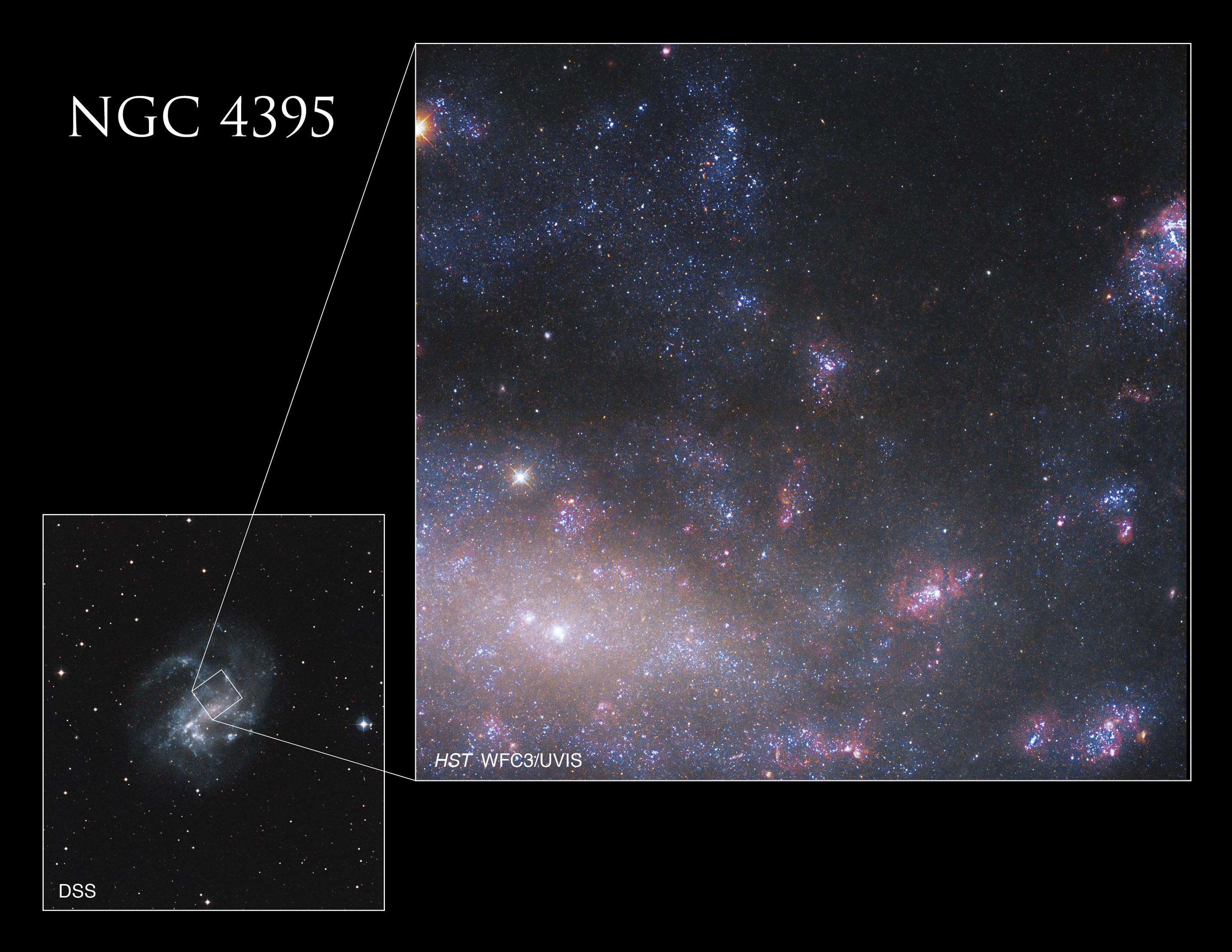NGC 4395, a spiral galaxy located 14 million light-years from Earth, is home to a supermassive black hole. The galaxy is also what astronomers call a Seyfert Galaxy, which means it has insanely an bright active galactic nucleus (AGN). In celebration of black hole week, NASA has shared a new Hubble photo of NGC 4395.
The AGNs at the center of galaxies like NGC 4395 are powered by the supermassive black holes found within these particular types of galaxies. And in this latest Hubble image of the galaxy’s central region, astronomers were able to get a good look at the bright nuclei that spread radiation throughout the galaxy.
This new Hubble photo of NGC 4395 shows that the AGNs found inside this Seyfert galaxy are much lower luminosity compared to other galaxies of this type. The supermassive black hole found within is estimated to have a mass of over 10,000 times our Sun.

But NGC 4395’s uniqueness doesn’t stop there. This Seyfert galaxy is also a dwarf galaxy, lacking the distinctive bulge found at the center of many other galaxies of this type. Hubble captured several photos of NGC 4395, including some of its spiral arms, showcasing the galaxy’s beauty and uniqueness.
The study of galaxies like NGC 4395 is essential, too, because they help astronomers better understand black holes and the parts that they play in our universe. While there is still much we do not know about these cosmic entities, every observation unlocks new data that astronomers can use.
Further, as NASA and others continue to observe these black holes, we reveal new secrets about our galaxy and even our universe, such as the fact that there are rogue black holes roaming through space, not locked to any specific galaxy or stars. Hubble’s photo of NGC 4395 is just another close look at the spectacle that black holes offer for distant observers.








